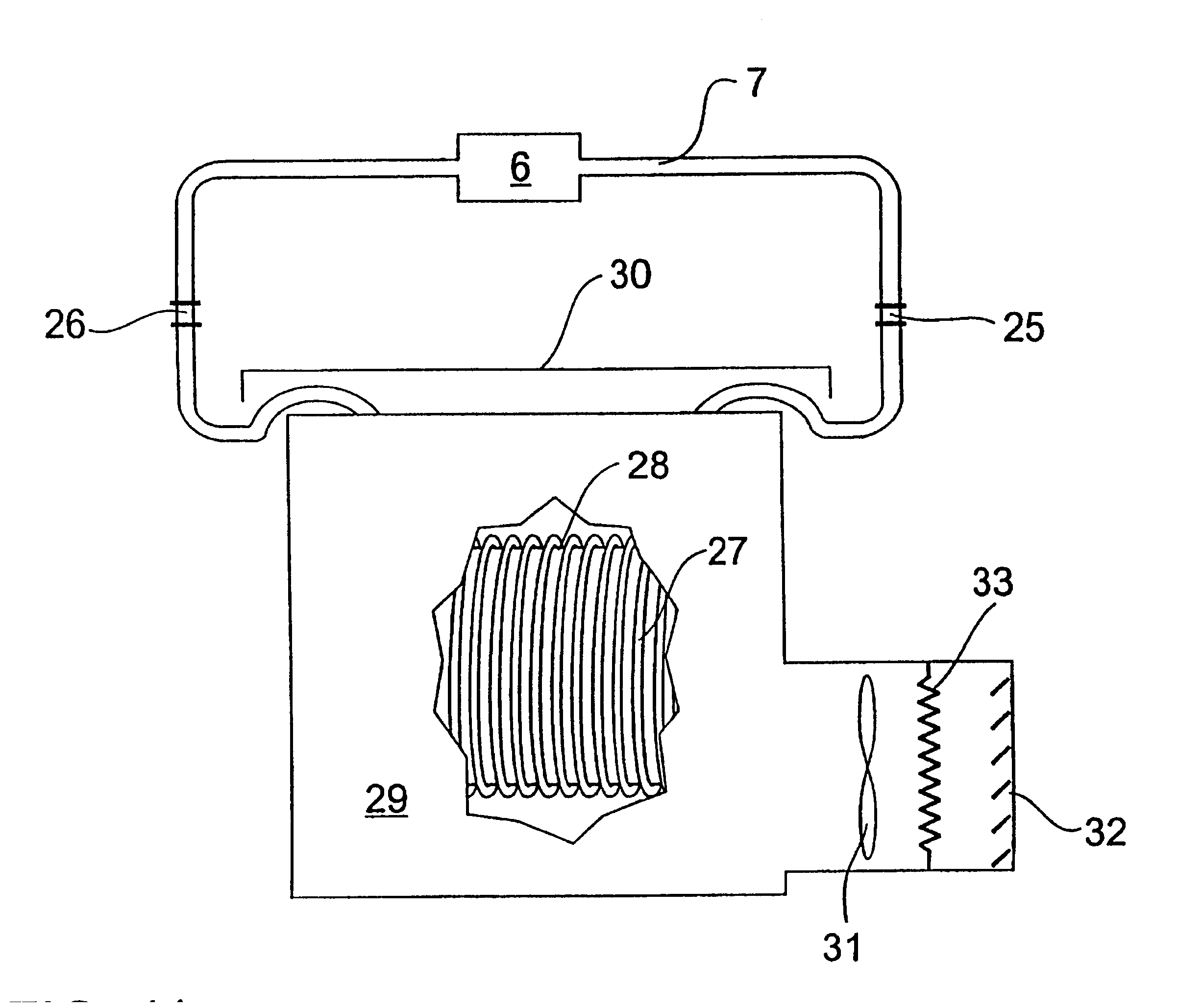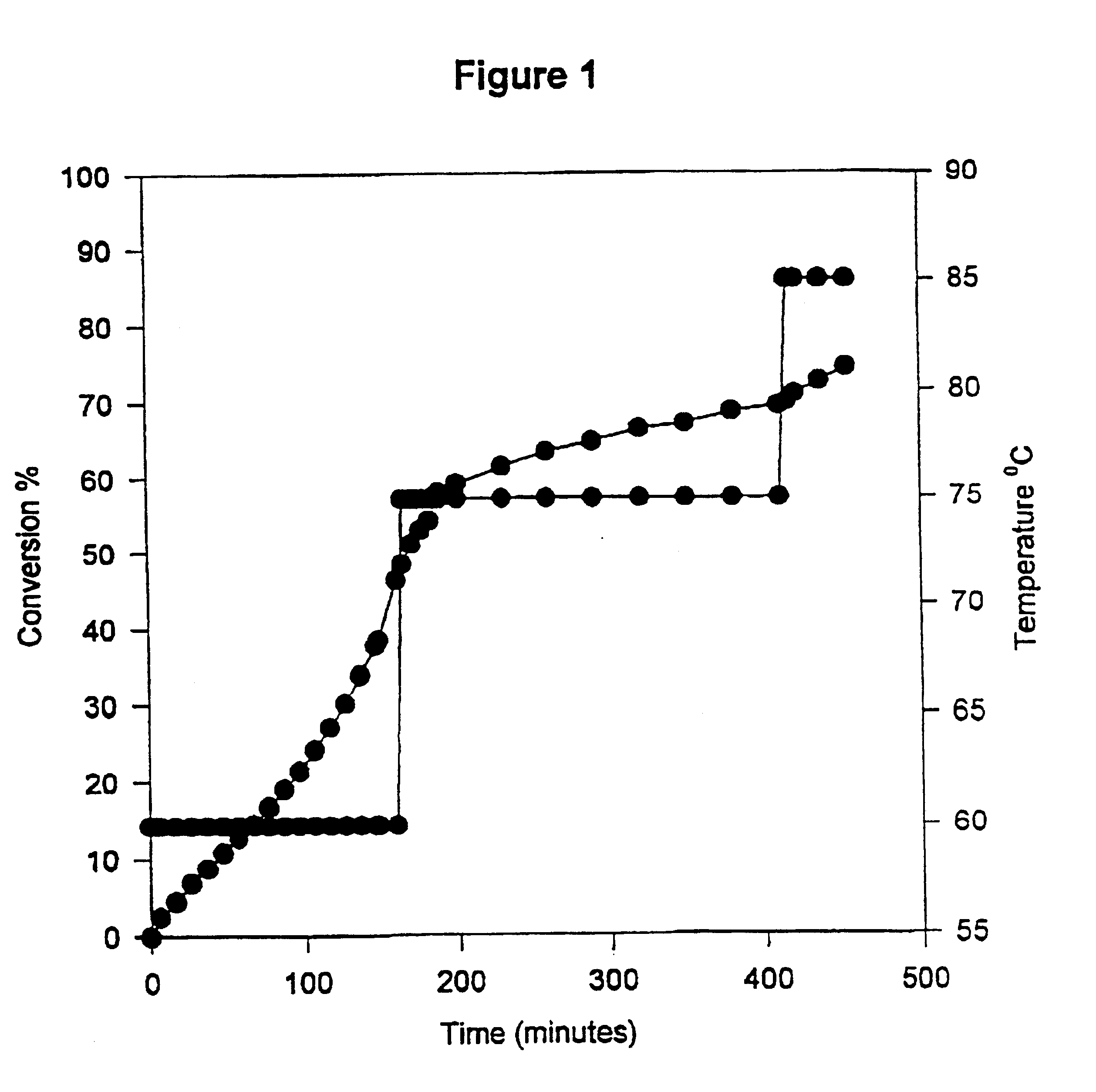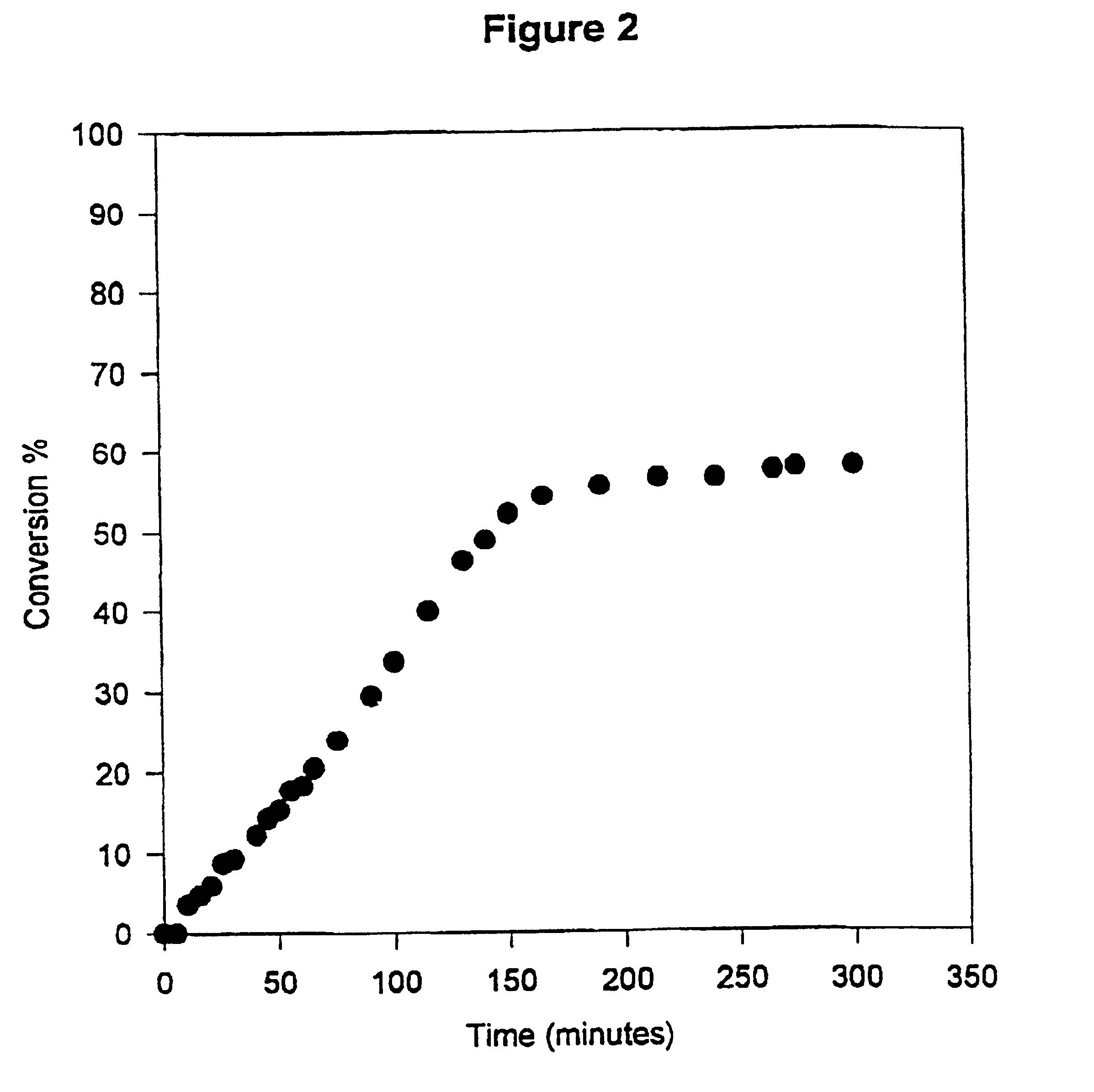Method of manufacturing a light guide
a manufacturing method and technology of light guides, applied in the field of production of light guides, can solve the problems of slow technique and place a practical limit on the length of light guides that can be produced, and achieve the effect of reducing deficiencies
- Summary
- Abstract
- Description
- Claims
- Application Information
AI Technical Summary
Benefits of technology
Problems solved by technology
Method used
Image
Examples
example 2
A mixture was formed comprising 50 parts by weight of distilled MMA, 1 part by weight of lauroyl peroxide and 50 parts by weight of CR39. The mixture was stirred for 30 minutes with a magnetic stirrer to obtain a uniform mixture, then degassed for a further 30 minutes.
An FEP tube was immersed in a bath of water at 60.degree. C. and the tube filled with the liquid mixture. The tube was pressurised to 500 kpa. After 6 hours the pressure was reduced to ambient and the polymerisation was left to continue for 12 hours. The polymerisation profile is shown in FIG. 2.
example 3
A mixture was formed comprising 50 parts by weight of distilled MMA, 1 part by weight of BPO and 50 parts by weight of distilled butyl methacrylate. The mixture was stirred for 30 minutes with a magnetic stirrer to obtain a uniform mixture, then degassed for a further 30 minutes.
A PFA tube was immersed in a bath of water at 75.degree. C. and the tube was pre-expanded at a pressure of 550 kpa for 60 minutes. The temperature was reduced to 60.degree. C. and the pressure reduced to ambient. The tube was then filled with the liquid mixture and pressurised to 100 kpa. After 3 hours the temperature of the bath was increased to 75.degree. C. and left for a further 1 hour. At the end of this time the pressure was reduced to ambient and left for a further 30 minutes. The polymerisation profile is shown in FIG. 3.
example 4
A mixture was formed comprising 45 parts by weight of distilled MMA, 1 part by weight of BPO, 5 parts by weight of distilled divinyl benzene and 45 parts by weight of distilled 2EHA. The mixture was stirred for 30 minutes with a magnetic stirrer to obtain a uniform mixture, then degassed for a further 30 minutes.
An FEP tube was immersed in a bath of water at 75.degree. C. and the tube was pre-expanded at a pressure of 500 kpa for 30 minutes. At the end of this time the pressure was reduced to ambient and the water bath was allowed to cool to 60.degree. C. The tube was filled with the liquid mixture. The tube was then pressurised to 100 kpa and left for 200 minutes. The polymerisation profile is shown in FIG. 4.
PUM
| Property | Measurement | Unit |
|---|---|---|
| length | aaaaa | aaaaa |
| length | aaaaa | aaaaa |
| lengths | aaaaa | aaaaa |
Abstract
Description
Claims
Application Information
 Login to View More
Login to View More - R&D
- Intellectual Property
- Life Sciences
- Materials
- Tech Scout
- Unparalleled Data Quality
- Higher Quality Content
- 60% Fewer Hallucinations
Browse by: Latest US Patents, China's latest patents, Technical Efficacy Thesaurus, Application Domain, Technology Topic, Popular Technical Reports.
© 2025 PatSnap. All rights reserved.Legal|Privacy policy|Modern Slavery Act Transparency Statement|Sitemap|About US| Contact US: help@patsnap.com



